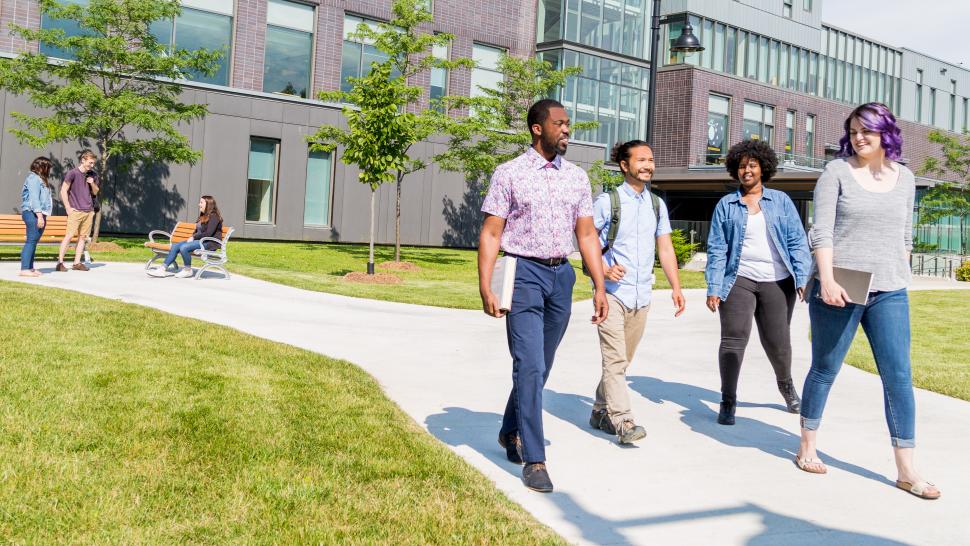
Humber College has long been recognized as an innovative applied research institution, and in 2021, the college cemented that status rising to a second place ranking of Canada's Top 50 Research Colleges and the top college in Ontario. Research Infosource Inc. publishes the list of college research leaders annually.
The college supports many social innovation research initiatives which focus on community development, building partnerships with community organizations and developing solutions to systemic issues.
Humber is also a leader in industry research. For example, at the Barrett Centre for Technology Innovation (Barrett CTI) the Advanced Manufacturing Skills Consortium facilitates partnerships with companies, which create learning opportunities for students, faculty and industry alike. They work together to provide solutions to real-world challenges.
Here are a few of the projects that contributed to Humber’s second place ranking:
Affordable housing for all
Imagine a day when all renters, including seniors and students, can consistently access affordable housing. In South Etobicoke, Humber professor Salomeh Ahmadi is working to make what might seem like a far-fetched dream a reality.
She was inspired to act after hearing about the Natural Sciences and Engineering Research Council of Canada (NSERC) College and Community Social Innovation Fund (CCSIF) and reached out to community groups to understand the obstacles they were facing. Ahmadi teamed up with longtime Humber partner LAMP Community Health Centre.
The research project aims to uncover cost of living issues in South Etobicoke to develop a baseline of housing affordability.
Salomeh will also identify measures to inform decision-making around the issue of affordable housing and contribute to the fight against homelessness, all the while advocating for the building of affordable housing through policy change.
3D landfill modelling
Landfills pose a risk to the public and the environment, so they must be closely monitored, but current modelling methods are expensive and time-consuming. So, Humber professor Maria Jacome went in search of a solution and received funding from NSERC.
Jacome hired two Civil Engineering Technology students, Shannen Boyen and Ankit Joshi, to assist in her research, and teamed up with U of T researcher Vincenzo Costanzo. The latter shared his expertise in modelling landfill gas (LFG) and groundwater migration.
With the help of industry partner DGI Geoscience, the group eventually developed a fast, cost-effective alternative to traditional methods, creating 3D models of landfills.
Their method simulates the landfill's behaviour, showing the interaction between LFG and contaminated groundwater moving through the landfill.
Reducing youth crime and gang violence
Youth at risk of entering the criminal justice system need help and resources, especially those who become involved with gangs. But how can community services best support them?
Researcher and Faculty of Social and Community Services professor Ann Corbold is investigating what makes community agency partnerships effective. After they gather the required information, Corbold and partners John Howard Society of Saskatchewan and Street Culture Project will identify best practices in the sector.
The study will also focus on programs for youth who are involved with the criminal justice system or at risk of becoming involved. The researchers will evaluate each program for cultural sensitivity, alignment to reconciliation and more.
The project's overarching goal is to reduce youth crime and gang violence in Canada.